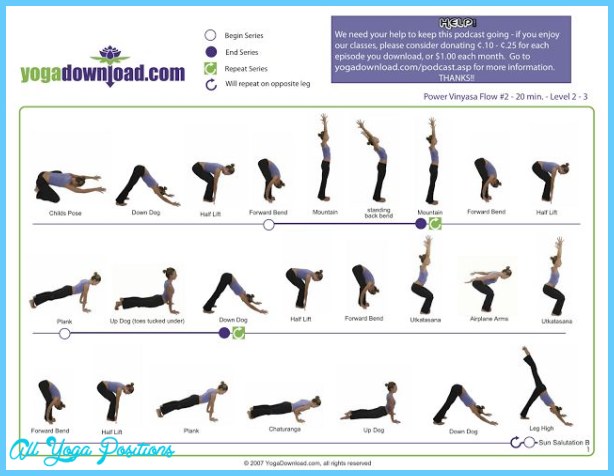
7 Tips on How to Choose a Perfect Yoga Mat
Are you in search of a perfect yoga mat, or you just want to know what to look out for when selecting a faithful companion mat on your yoga journey? You are not alone. There are so many options to choose from and this can get confusing, especially if you are new to yoga. However, if you know what to look out for, you can choose the perfect mat for yoga exercises every time.
Choosing A Yoga Mat
Yoga is peaceful yet strenuous, with different difficulty levels, so you need to look beyond color and pattern when choosing a yoga mat. The mat you choose should reflect your experience and dedication. It should suit your style and still be strong enough to keep you stable during yoga asanas and poses. It also needs to be cushy and comfortable, yet portable and easy to store.The look, feel, and personality of your yoga mat are all affected by its surface texture, material, thickness, and manufacturing process. By investing a bit of time to choose the perfect yoga mat, you can save yourself a lot of stress down the line. In this guide, SportsUncle will cover each of the 7 factors to look out for when choosing a mat for yoga exercises, making the decision process a lot easier.
These are seven essential tips to consider when choosing the best mat for your yoga exercises.
1. Consider Your Needs
When choosing a new yoga mat, you need to think about your personal needs. Especially with regards to the type of yoga exercises you perform. Here are the personal factors you need to consider:
- Body Type
Your choice of yoga mats should be based, to an extent, on your body type. People with slimmer bodies and less natural cushioning fat deposits on their body may benefit from thicker/padded mats of up to ¼ of an inch. The standard yoga mat size is usually ⅛ inch thick and this works for most people.
- Your Type of Yoga
The type of yoga exercises you'll be doing and their difficulty level can also affect the kind of mat you should buy. If you are a newbie or just experimenting, you can get away with a lesser quality mat, until you are ready to splurge on something more expensive. Flow yoga exercises may require a mat with more traction as it involves more complex movements, while yin classes call for soft, cushy yoga mats.
Image Credit - Yogadownload.com
- Where You do Yoga
The location where you plan to do yoga also affects the type of mat you use. Those doing at home don’t need to worry about mat weight or portability. Those who take classes outside the home may want to consider the portability of a mat before purchasing.
2. Thickness or Density
Yoga mats come in three main thickness classes and the differences between them are quite significant. If your mat is too thin, it may result in knee and joint problems over time. Mats that are too thick may make it difficult to hold certain poses and maintain your balance. Below is a list of popular yoga mat thicknesses as well as their advantages and disadvantages:
| Mat Thickness | Mat Grade | Advantages | Disadvantages |
| ¼ Inch Thick | Thick/High-end | Offers more cushioning and the best comfort and support. | Extra mass makes it less portable and tougher to fit in standard gym bags. |
| ⅛ Inch Thick | Average | The perfect combination of performance and portability. | May not be suitable for those with above/below average body types. |
| 1/16 Inch Thick | Ultra-portable | Will fit in any yoga mat bag and allow users to get a better feel of the floor. | Is less padded and may be unsuitable for some users. |
Actually, the above explanation is for the layman to understand in simple language. If you want to really understand then remember it is about Density NOT whether it is a thick or thin mat.
A mat that is very cushy may feel great but is not very stable in downward warrior dog and balancing sequences. As a matter of fact, studies have shown cushy mats can cause distress in the wrists, hip and knee joints. Just look from playing on the new playing surfaces which are filled with bits of recycled tires. The right balance of a mat must incorporate firmness and a good 'non-slip factor'.
You do not need the sensation of slipping on the mat and sinking into the sand. For more comfort in knee poses, think about folding the mat (doubling your mat) or adding a different mat, and even a towel beneath your knee for knee strings than practicing to a mat that is ventilated.
Additionally, as with thick or thin mats, don't be deceived by 3mm, 5mm or 6.2mm thickness levels. Mats that are 5mm can be bought by you from 5 distinct manufacturers and they all will have a distinct feel to them, however they say 5mm. Density is the key, not depth. You can purchase a quality 3mm mat which will have a stability than a 5mm standard mat because of the density factor.
3. Material
The material your yoga mat is made of will determine how much it yields to pressure and wears over time. This also determines its texture, stickiness/sponginess and whether it is eco-friendly or not. Below is a list of the most common yoga material and their characteristics.
- PVC: Most entry-level yoga mats, especially the inexpensive ones, are made of polyvinyl chloride. It is durable and comfortable enough but it is not biodegradable, making it harmful to the environment.
- Foam: This is essentially the eco-friendly version of PVC mats, as they offer the same level of performance without the harmful side effects.
- Rubber: This is a solid alternative to PVC mats, just like foam. Rubber mats contain latex which can be problematic for those with allergies.
- Cotton: These yoga mats are thin and eco-friendly. They can also be combined with other yoga mats for extra support. Cotton yoga mats absorb sweat and increase grip/traction even when wet.
- Jute: Jute is a fibrous material with the same resilience and sustainability as cotton. Jute yoga mats are normally combined with other mats for increased traction and support.
4. Texture
The texture of your yoga mat affects how much traction you will have, as well as your personal comfort and we have a variety of textures. Sticky mats are really useful if you're doing yoga that involves a lot of intense poses but tends to have a rough texture which may irritate the skin over time. For a smoother yoga mat, you can go for PVC or more eco-friendly options like rubber or foam.
5. Maintenance
We advise that you choose a yoga mat that is durable and easy to clean and care for. The main task when caring for your yoga mat is ensuring that it remains as clean as new after every use. To properly maintain your yoga mat, you first have to determine what material it is made of. Cleaning and caring practices for a natural rubber mat are different from that of a PVC or synthetic mat.
- Caring for a PVC/Synthetic Yoga Mat: PVC mats are easier to clean and care for. Lay the mat on a flat surface and wipe the top surface down with a wet sponge or rag using light soap and water. You can also use some yoga mat wipes for quick in-between maintenance.
- Caring for Natural Rubber Yoga Mats: To ensure that your natural rubber yoga mats retain their stickiness, we advise that you clean it with a sponge and warm water once every other week.
Remember, just washing your mat cleans the mat, but it must be totally dried and not just rolled up damp. What happens to rolled up damp clothes after many days?
Note: To retain the shape of your yoga mat during storage it is best not to put anything on top of it. Doing that will distort the shape of the mat.
Note: NEVER use another person’s mat without cleaning it first. Just think of where your mat has been used. Believe it or not, it can be heaven for bacteria including fungi. I know of many occurrences over the years with issues of fungi in the feet because of the floor and dirty mats. And During the Pandemic its a Big NO-NO.
6. Size
The size of a standard yoga mat is usually 24" x 68". The width will almost always remain at 24" (except in special cases) but the length can sometimes vary, with some yoga mats being as long as 84". You should choose a yoga mat that is long enough for your entire body when you lie down in a downward-facing pose.
7. Stickiness
Stickiness, in this case, refers to the suction-like grip that helps you hold and maintain proper alignment as you move from pose to pose. A stick yoga mat will keep you from sliding all over the place. Below is a quick stickiness reference guide.
| Yoga Mat Material | Stickiness Level |
| PVC, Foam | High |
| Rubber | Moderate |
| Cotton, Jute | Low |
The most important thing is that you choose a yoga mat you are comfortable with. So, we urge you to take all you've learned and shop for your perfect Yoga Mats & Foam Rollers !
Your email address cannot be published. Required fields are marked*

 My Account
My Account Track Order
Track Order Sports Guide
Sports Guide
